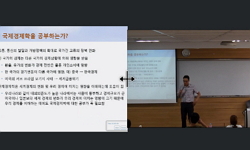경북 지역 옹기 제작자들의 기술체계와 사회체계를 검토하기 위해서는 거시적 차원의 국가경제사 변화와 미시적 차원의 옹기생산의 기술사회체계를 포괄적으로 관련시켜 볼 필요가 있다. ...
http://chineseinput.net/에서 pinyin(병음)방식으로 중국어를 변환할 수 있습니다.
변환된 중국어를 복사하여 사용하시면 됩니다.
- 中文 을 입력하시려면 zhongwen을 입력하시고 space를누르시면됩니다.
- 北京 을 입력하시려면 beijing을 입력하시고 space를 누르시면 됩니다.

옹기생산의 기술체계와 사회체계 변화 : 경북의 옹기제작자를 중심으로 = The Technological and Social Systems of Earthenware Productions - The Case of Artisans in Gyeongsangbuk-do Province
한글로보기https://www.riss.kr/link?id=A77034798
- 저자
- 발행기관
- 학술지명
- 권호사항
-
발행연도
2009
-
작성언어
Korean
- 주제어
-
KDC
911
-
등재정보
KCI등재
-
자료형태
학술저널
-
수록면
7-44(38쪽)
- DOI식별코드
- 제공처
-
0
상세조회 -
0
다운로드
부가정보
국문 초록 (Abstract)
경북 지역 옹기 제작자들의 기술체계와 사회체계를 검토하기 위해서는 거시적 차원의 국가경제사 변화와 미시적 차원의 옹기생산의 기술사회체계를 포괄적으로 관련시켜 볼 필요가 있다. 이 논문은 1960대 이후의 경제체계 변화와 옹기를 제작하는데 관련된 재료, 생산도구, 노동조직, 기술과정과 기술행동 등의 관계체계 변화를 이해하기 위해 대장, 건아, 뒷일꾼 등을 대상으로 수집한 자료를 분석하는데 초점을 맞추었다. 이를 통해 도출된 연구결과는 다음과 같다. 첫째, 1960년대 이전의 옹기제작과정에는 대장과 건아, 뒷일꾼의 분화된 역할이 이루어졌다. 기술과정에 관련된 기술요소들의 구성논리는 제작자가 재료와 노동수단을 전유하기 위한 기술적 실천, 전통기술지식과 긴밀하게 관련되고 있었다. 둘째, 1960년대 이후 옹기제작자들이 옹기를 제작하는 과정에서 이루어진 기술선택은 그들이 사용한 재료나 도구의 물성(物性, materiality)과 더불어서 변화하는 경제적 상황에 대응하기 위한 기술·사회적 전략을 행하였다. 제작자들은 옹기의 완성을 위해 전통적인 기술과 현대 생산기술을 관련시키며 이것을 대립적으로 생각하기보다 실패율을 감소시키기 위해 유용하다고 판단된 기술을 절충·선택하였다. 셋째, 생산의 사회체계는 전통적 생산방식을 기반한 옹기산업이 시장경제의 불충분한 적응으로 점진적으로 해체되는 과정에 처하게 되었다. 일부의 옹기제작자들은 공방제 운영방식에서 대량생산체제로 전환함으로 써 임금비의 절약과 기술과정의 효율성을 추구하는 현대적 생산방식을 선택하였다. 이러한 현상은 노동력과 자본의 한계에 직면한 제작자들이 전통적인 제작과 운영방식을 버리고 이윤을 추구하기 위해 새로운 경제환경에 적응하기 위한 전략을 실천하는 과정에서 비롯되었다. 거시적, 미시적 기술 사회체계의 변화는 제작자의 역할과 위계, 생산단위의 변화를 야기하였다.
다국어 초록 (Multilingual Abstract)
This paper examines the changing aspects of the integrated relationship among the technical process, the technical behavior of the artisan, social relationship of production, and the raw material in the earthenware production from immediately before t...
This paper examines the changing aspects of the integrated relationship among the technical process, the technical behavior of the artisan, social relationship of production, and the raw material in the earthenware production from immediately before the 1960s to today. By closely relating the interconnected relationship concerning raw material, the production tools and labor organization needed for earthenware production, and external economic changes, it also aims to understand the characteristics shown in the way the artisan chooses, excludes, and borrows techniques.
First, the technical elements that constitute both the technical and social systems form an organic relationship. Introduction of new techniques, gradual changes in the tools from traditional to modern, external and internal changes in the socioeconomic environment such as the moving of the rural population to cities, as well as the increasing importance placed on technical efficiency from the mid-to-late 1960s brought about various changes to the social and technical systems. Traditional production organization has almost been dissolved due to the switch from traditional kilns to modified ones, the introduction of pug mills and vacuum deairing machines, and the usage of electric iron spinning wheels.
Second, the social relationship of earthenware production had to face various processes, including deterioration, termination, and reconstruction as it encountered the economic system of late industrialization from an agriculture-based, subsistence economy. As a response to the new social and technical environment, families and kinship organizations are producing earthenware in order to minimize expenditures, maximize efficiency, and pursue economic rationality. Some local factories have restructured the family unit into one of production and are attempting to transmit traditional techniques from grandfathers to fathers and on to grandchildren, while developing goods that appeal to the period, in addition to recreating production technology.
Third, though the mechanization of production tools to increase energy efficiency and labor productivity is under way, traditional spinning wheels are still being used in some cases. This is because using electric spinning wheels do not increase the artistic authenticity or creativity of the artisan’s earthenware formation technique. Also, it would not change the social relationship of production engaged in the work. However, as electric spinning wheels allow more practical and efficient operation, there could be a slight increase in the amount of earthenware production.
목차 (Table of Contents)
- 【초록】
- 1. 머리말
- 2. 경북의 옹기점과 옹기제작자 현황
- 3. 1960년대 이전의 기술체계
- 4. 변화된 기술체계
- 【초록】
- 1. 머리말
- 2. 경북의 옹기점과 옹기제작자 현황
- 3. 1960년대 이전의 기술체계
- 4. 변화된 기술체계
- 5. 생산의 사회관계 변화
- 6. 맺음말
- 【참고문헌】
- (Abstract)
동일학술지(권/호) 다른 논문
-
1970-80년대 옹기상인의 거래 장부 분석을 통한 옹기문화지도
- 역사문화학회
- 김재호(Kim Jae Ho)
- 2009
- KCI등재
-
- 역사문화학회
- 석대권(Seok Dae Kwon)
- 2009
- KCI등재
-
- 역사문화학회
- 안귀남(An Kwi Nam)
- 2009
- KCI등재
-
- 역사문화학회
- 高東煥(Ko Dong Hwan)
- 2009
- KCI등재




 KCI
KCI DBpia
DBpia


